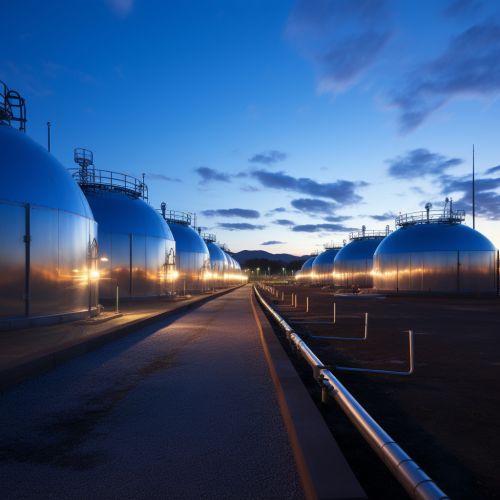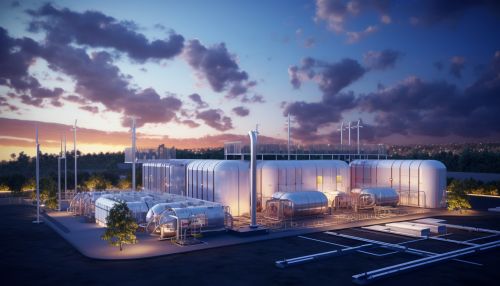Thermal energy storage
Introduction
Thermal energy storage (TES) is a technology that stocks thermal energy by heating or cooling a storage medium so that the stored energy can be used at a later time for heating and cooling applications and power generation. TES systems are used particularly in buildings and industrial processes. They can be used both on an individual and on a central scale.
Types of Thermal Energy Storage
TES systems can be categorized into three types: sensible, latent, and thermochemical.
Sensible Heat Storage
Sensible heat storage (SHS) is the most common type of TES. It involves increasing the temperature of a liquid or solid to store heat and releasing it by lowering the temperature. The main advantage of sensible heat storage is the high amount of energy it can store, but it requires a large temperature difference between the storage and the environment to function effectively.
Latent Heat Storage
Latent heat storage (LHS) involves the use of phase change materials (PCMs) that absorb or release thermal energy during a phase change. The main advantage of latent heat storage is that it can store a large amount of energy with a small temperature difference between the storage and the environment.
Thermochemical Storage
Thermochemical storage (TCS) involves a chemical reaction to store and release thermal energy. The main advantage of thermochemical storage is that it can store thermal energy indefinitely and has the highest energy storage density of the three types.
Applications of Thermal Energy Storage
TES systems have a wide range of applications, from small-scale residential use to large-scale industrial use.
Building Heating and Cooling
TES systems are commonly used in buildings for heating and cooling purposes. They can be used to store excess solar energy during the day for use at night, or to store excess heat from air conditioning systems for use during peak demand periods.
Industrial Processes
TES systems are also used in industrial processes where there is a need for heat and cooling. They can be used to store excess heat from industrial processes for use in other parts of the process or to store cooling energy for use during peak demand periods.
Power Generation
TES systems can also be used in power generation, particularly in renewable energy systems. They can be used to store excess energy from renewable sources for use when the renewable source is not producing energy, such as at night for solar power systems.
Advantages and Disadvantages of Thermal Energy Storage
Like all technologies, TES systems have both advantages and disadvantages.
Advantages
The main advantages of TES systems are their ability to store a large amount of energy, their ability to store energy for long periods of time, and their ability to reduce the need for peak power generation.
Disadvantages
The main disadvantages of TES systems are their high initial cost, their need for a large amount of space, and the potential for energy loss during storage and retrieval.
Future of Thermal Energy Storage
The future of TES systems looks promising, with ongoing research and development aimed at improving their efficiency and reducing their cost. With the increasing demand for renewable energy and the need for energy storage solutions, TES systems are likely to play a key role in the future of energy systems.


